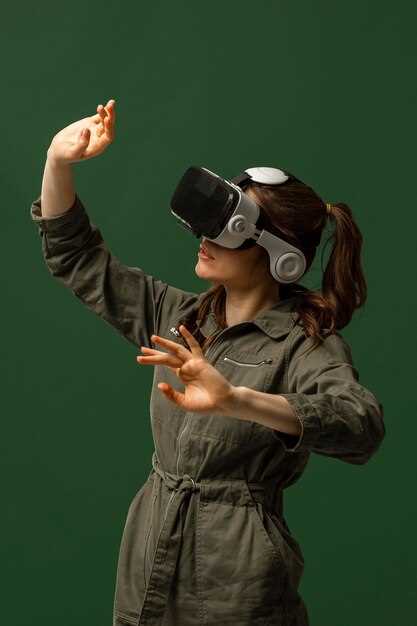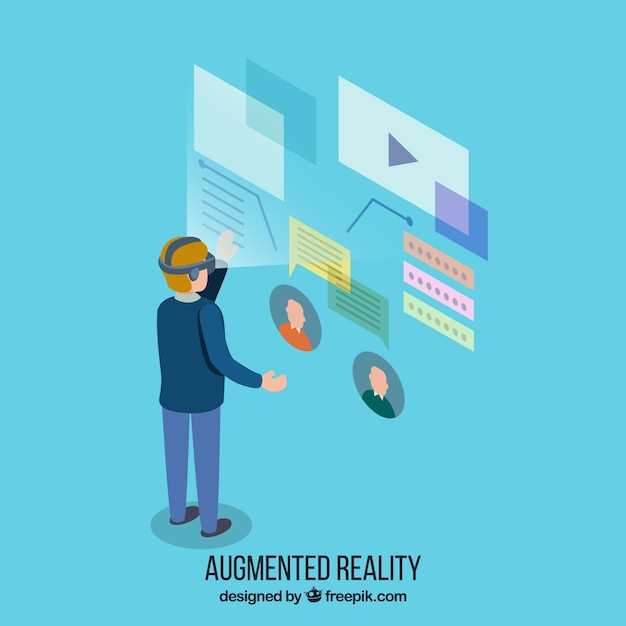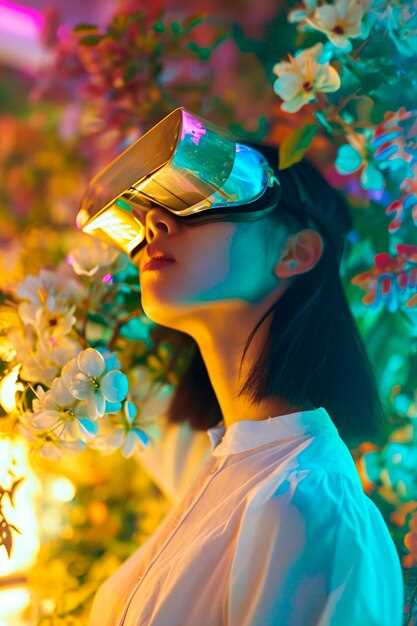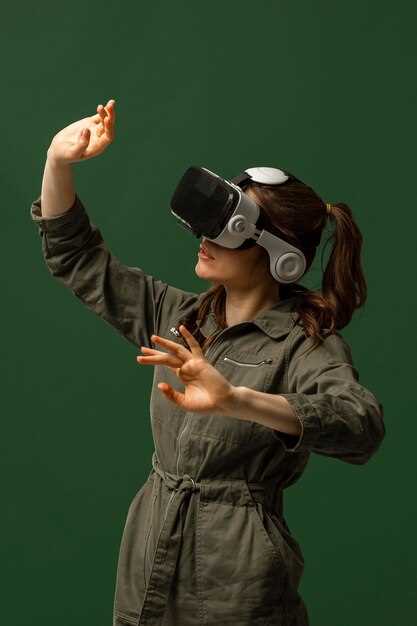
As technology advances, boundaries blur between physical existence and simulated experiences. Innovations invite users to engage in a vibrant tapestry of possibilities. Today, individuals can traverse realms previously restricted to imagination. Engagements often feel more intimate and meaningful. This transformation reshapes how people connect, learn, and discover.
In this amalgamation, traditional perceptions of space and presence undergo a radical shift. No longer confined to screens, interactions manifest dynamically within expansive environments. Users find themselves drawn into mesmerizing realms where creativity knows no limits. Through sophisticated tools, sensations expand beyond usual touchpoints, creating a mesh of experiences.
Visions of this synthesized realm motivate designers and developers alike, as they seek to craft experiences that resonate deeply with people. The fusion generates unique opportunities for communication, commerce, and collaboration. Shifting narratives challenge our understanding of what it means to engage meaningfully. With each innovation, new questions arise, pushing boundaries of what’s possible.
As communities thrive within these evolving landscapes, a new era beckons on the horizon. Impacts ripple through various sectors, including education, entertainment, and social interaction. Yet, while possibilities multiply, so do considerations surrounding ethics and accessibility. Balancing excitement with responsibility becomes crucial as enthusiasts journey into this promising paradigm.
Exploring the Intersection of Augmented Reality and the Metaverse

At the crossroads of immersive experiences and digital realms, new worlds arise. Users are drawn into vibrant spaces that blend physical elements with virtual enhancements. Interaction becomes seamless as layers of information overlay our surroundings. Immersion takes center stage, captivating individuals in ways once deemed impossible. The evolution of technology has opened doors to uncharted territories.
As these realms intertwine, the potential for innovative experiences expands dramatically. Enhanced environments allow participants to engage with one another regardless of location. The merging of physical and digital spaces redefines how we perceive interactions. Social dynamics adapt, creating unique avenues for connection.
In this transformative landscape, consumers gain unprecedented access to rich content. Consider how individuals can attend virtual concerts while experiencing real-time augmentations–life-like avatars, interactive elements, and even contextual information about performers. Such interactions offer a glimpse into future possibilities.
The implications for various industries are immense, ranging from entertainment to education. Companies are beginning to explore ways to leverage these technologies. Training programs can simulate complex scenarios, making learning more engaging and effective. The lines between learning and play blur, encouraging exploration in unprecedented frameworks.
Furthermore, social platforms are reshaping how we build relationships. Virtual gatherings immerse friends and families in shared experiences that transcend geographical boundaries. As virtual communities flourish, connections deepen, facilitating authentic interaction in a digital age.
The fusion of these realms inspires creativity and collaboration. Artists, developers, and thinkers can redefine their disciplines. As this landscape evolves, the quest for balance between personal experience and community connection continues. Embracing these advancements may unlock limitless opportunities, transforming our reality into something extraordinary.
The Role of Augmented Reality in the Metaverse

Technological innovations continue to shape how people engage with virtual environments. Blending physical elements with digital creations opens up new horizons. Users can experience immersive opportunities that enrich their lives. This combined approach fundamentally enhances ways of experiencing shared spaces.
AR provides a unique layer of interaction, allowing users to visualize and manipulate virtual elements within their real surroundings. By bridging gaps between tangible objects and digital content, this technology creates an engaging tapestry of experiences. Users navigate familiar settings while discovering new adventures in unexpected places.
In an era where connectivity drives human experiences, this fusion presents endless possibilities for socialization, collaboration, and entertainment. Players can enjoy captivating gaming scenarios, while professionals leverage these insights for training or presentations. Moreover, education benefits immensely, enabling learners to grasp complex concepts through interactive visuals.
With the constant evolution of virtual landscapes, the integration of this technology becomes increasingly crucial. The ability to interact with visible layers transforms ordinary situations into extraordinary experiences that captivate audiences. As creators continue to innovate, the potential applications become limitless, bridging gaps that once seemed unbridgeable. Users will find joy in exploring the coexistence of both realms.
Ultimately, this synergy fosters a vibrant community where individuals can connect, create, and thrive together. An enriched social fabric emerges, blending reality with imagination, as each participant contributes to a shared narrative. This immersive journey promises to redefine experiences in ways once thought impossible.
How AR Enhances Virtual Environments
The integration of digital elements into actual surroundings reshapes our experiences. It creates a more immersive atmosphere. Users engage with content like never before. Environments feel alive. They adapt to individual interactions and needs, making every encounter unique.
As users navigate through these spaces, various elements work cohesively. Manipulation of objects becomes intuitive, providing a sense of agency. Imagine an artist sculpting a statue that appears alongside existing features. This blending transforms abstract concepts into tangible experiences.
- Enhanced engagement keeps users intrigued.
- Interactions encourage creativity and innovation.
- Users perceive information in a multi-dimensional context.
- Navigation becomes intuitive and instinctive.
Moreover, the synergy between real and virtual realms ensures that creativity flourishes, resulting in opportunities for collaboration that were previously unimaginable as people can easily share ideas across borders while working in these enriched spaces.
- Real-time feedback enhances learning.
- Connection to social networks fosters community building.
- Readable data overlays inform decision-making.
Ultimately, this harmonization between physicality and digitality enables users to experience environments that are not only visually captivating but also foster a sense of belonging and engagement. It encourages exploration in ways we have yet to fully understand.
Creating Interactive Experiences in Digital Spaces
In modern environments, engaging experiences are becoming increasingly crucial. Users seek connections, not just with content but also with each other. Immersion into vibrant ecosystems can redefine social interactions. People desire to participate actively rather than being passive spectators. Such experiences should ignite curiosity and foster creativity across varied platforms.
Interactive encounters offer a unique blend of entertainment and education. They encourage users to explore, discover, and collaborate. Gamified elements can enhance engagement, turning routine tasks into exciting adventures. Each click, gesture, or movement in these spaces can lead to something unexpected. This unpredictability creates a sense of thrill, allowing individuals to shape their journeys in real-time.
Visual storytelling plays a pivotal role in crafting these moments. Stunning graphics, coupled with responsive designs, elevate user experience. When participants feel their choices matter, motivation flourishes. Interactivity shouldn’t merely be an add-on; it should be woven into the fabric of the experience itself. Utilizing intuitive interfaces ensures that participants navigate seamlessly.
Furthermore, integrating social aspects amplifies connection among participants. Collaborating with others fosters a sense of community, enriching the overall engagement. In settings where users can share achievements or challenge each other, feelings of camaraderie emerge. This shared journey transforms any space into a vibrant hub of activity suitable for personal and group endeavors.
As technology continues to evolve, the potential for innovation is boundless. Adaptability is key to meeting user expectations while also anticipating their needs. Leveraging user-generated content can enhance the quantity and diversity of experiences. Celebrating creativity while building interactive platforms opens doors to unique possibilities, empowering individuals to express themselves fully.
AR Applications for Social Interaction
Innovative techniques are reshaping how people connect in virtual spaces. Social engagements are evolving rapidly, thanks to technology. Soon, genuine interactions will transcend physical boundaries. They allow users to experience shared moments like never before.
Applications harness cutting-edge tech to create immersive environments. Users can engage with others dynamically, enhancing their social lives. Platforms like these empower friends to interact regardless of distance. They bring communities together, fostering relationships based on shared experiences.
Consider experiences such as virtual gatherings and events. People can attend concerts, parties, or exhibitions through immersive applications. These platforms enable users to feel present, even when separated by miles. With the ability to create avatars, participants can express themselves freely. Enhanced connectivity opens opportunities for collaboration and creativity.
| Application | Features | Benefits |
|---|---|---|
| Social VR platforms | Customizable avatars, virtual spaces | Immersive experiences, deeper connections |
| Collaborative games | Team-based challenges, shared quests | Strengthens teamwork, builds friendships |
| Virtual events | Live broadcasts, interactive elements | Accessible entertainment, global participation |
Through these platforms, users experience a new reality of engagements. Social interactions can now feel touchable and present, despite physical distance. With every advance, new possibilities emerge, redefining how communities thrive. Ultimately, this technology promotes deeper understanding among individuals, regardless of geographical separation. Such advancements will continue to shape interactions in an increasingly connected world.
Improving Accessibility and Engagement
Enhancing involvement is essential for creating inclusive experiences in virtual spaces. Users should feel welcomed and able to navigate effortlessly. Accessibility opens doors for diverse audiences, fostering participation and interaction. Moreover, engaging features invite individuals to explore more deeply.
Consider a platform where everyone can access immersive experiences, regardless of abilities. Real-time feedback mechanisms play a crucial role in this context. They allow users to voice their thoughts or challenges, leading to instant improvements. Incorporating assistive technologies expands possibilities, making environments more user-friendly and enjoyable.
Innovative approaches can significantly transform how immersion is perceived. Simple adjustments, such as customizable interfaces, lead to increased satisfaction. When users can tailor their surroundings, they feel ownership over their experience. Accessibility should not be an afterthought; it must be at the forefront of design considerations.
Gamification elements can also enhance engagement. Reward systems encourage exploration and active participation. By providing tangible benefits, users remain motivated and invested in their journeys. These elements can transform passive observers into active contributors.
Creating inclusive virtual environments not only empowers individuals but also enriches communities. Everyone has unique preferences, and by acknowledging this, we can ensure broader participation, ultimately fostering collaboration and creativity in shared digital spaces. Initiatives that prioritize access will pave the way for vibrant, dynamic experiences that resonate with all users.
Immersive Experiences in the Virtual Realm

In contemporary times, immersive encounters within virtual universes captivate individuals. These unique settings foster engagement beyond traditional screens. Users find themselves enveloped in stimulating environments. Sensory experiences evoke emotions and provoke creativity. Interaction becomes a profound journey, rather than merely a task.
Dynamic narratives unfold before participants’ eyes. They traverse landscapes rich in detail, where every element tells a story. Players collaborate, compete, or explore at their own pace. This engagement transforms solitary activities into shared adventures.
Innovative tools create stunning visuals, enhancing auditory features that elevate immersion. Techniques such as spatial audio deliver sound from various directions, providing a genuine sense of presence. As these interactions evolve, so does the technology facilitating them. New advancements in graphics and user interfaces allow for seamless transitions between various activities.
As individuals navigate these virtual realms, they experience emotional connections with digital entities. Emotions transcend mere interaction; they create bonds with characters and companions. Nostalgia, joy, and excitement intertwine, forming memorable moments that linger long after the experience concludes. Enthusiasm for virtual engagement continues to grow. People crave the thrill of immersing themselves in unfamiliar yet relatable worlds.
This vibrant landscape of possibilities echoes the human desire for connection. Environments rich in detail allow for profound exploration of identity and relationships. The boundaries between physical and virtual fading create opportunities for novel experiences that challenge perceptions. These multifaceted journeys cultivate a sense of belonging, uniting individuals across distances.
As advancements flourish, future possibilities seem boundless. Endless opportunities await within these immersive spaces. Individual creativity thrives, bolstered by the collaborative nature of shared exploration. Each interaction promises to redefine expectations, ushering in a captivating era of experiences.
Evolution of AR Technology for Gaming
Over recent years, immersive experiences in gaming have transformed significantly. Players now seek more engaging and lifelike adventures. Innovations have led to a revolution in how games are perceived and played. Excitement and intrigue fuel this rapidly changing landscape.
Initial efforts focused on basic overlays, enhancing traditional gameplay. Simple graphics captured attention, yet lacked depth. As technology progressed, developers began to dream bigger. Gamers craved experiences beyond screens.
One of the paramount developments came with mobile devices becoming more powerful. Smartphones are now equipped with advanced sensors and graphics capabilities. This leap opened new doors for interactive gaming. Titles like Pokémon GO showcased potential, blending physical worlds with virtual elements.
Subsequently, social dynamics shifted, encouraging players to explore together. Collaboration became essential in achieving game objectives. Players ventured into the real world, fostering connections and competition. Such features created communities rooted in shared experiences.
As hardware continued to advance, so did software capabilities. Developers leveraged machine learning and spatial mapping to refine user experience. Complex interactions emerged, with augmented environments tailored to individual players. This evolution demanded creativity while inspiring fresh ideas.
Presently, experiences are more than mere games; they embody living stories. Soon, game worlds will blur lines between imagination and reality. Gamers will engage in multifaceted narratives that resonate on emotional levels. The possibilities are boundless, pushing traditional gaming into new realms of exploration.
Connecting Real World with Virtual Elements
Bridging physical environment with digital constructs opens new dimensions for engagement. Merging these realms creates possibilities that spark creativity and innovation. Individuals increasingly find themselves navigating a fluid space where the tangible coexists with the intangible. This blend fosters unique experiences that enrich everyday life.
Consider a scenario where users interact with virtual objects while walking in their city. They may see a digital overlay on a historical building, providing rich information. Perhaps they can even engage with a holographic character that shares stories from the past. Every corner could reveal something unexpected and exciting.
- Enhanced learning opportunities through immersive educational experiences.
- Interactive art installations that invite participation from passersby.
- Enhanced retail experiences where consumers visualize products in their own space.
- Gamified elements in parks that encourage exploration and social interaction.
This seamless integration not only transforms how we perceive our surroundings but also influences our interactions with others, leading to a culture where collaboration, sharing, and creativity flourish at every turn. By blending real environments with virtual features, opportunities arise for individuals to redefine their experiences and engage in previously unimaginable ways.
As this synergy evolves, the lines between existence we know and alternate universes become increasingly blurred. Innovative applications pave the way for a future where engaging with virtual elements enhances our understanding of and connection to the physical world.
Future Trends in Immersive Interactions
Emerging technologies are reshaping how users connect with virtual environments. Innovative experiences are becoming more engaging and personalized. Users crave authentic engagement beyond traditional screens. As technology evolves, so do expectations.
Spatial computing will redefine interaction norms. People will navigate seamlessly through digital realms infused with physical elements. Enhanced emotional connections are anticipated, creating more meaningful exchanges.
Wearable devices capable of sensing movement will become commonplace. Users will enjoy interactions that feel instinctive, rather than forced. Social spaces will merge effortlessly with interactive content, blurring lines between real and virtual.
Gamification will permeate various sectors, enhancing everyday tasks. Education, work, entertainment–all will benefit from playful approaches that motivate participation. Immersive storytelling will captivate audiences, making narratives richer and more compelling.
As artificial intelligence advances, tailored experiences will emerge. Machines will learn from individual behaviors, facilitating deeper connections. This personalization fosters a sense of belonging in vast digital communities.
Ultimately, the fusion of multiple technologies promises to create extraordinary interactions. Boundaries will dissolve, allowing creativity to thrive in unprecedented ways. Users can look forward to a future where their experiences are as boundless as their imaginations.
Video:
The Future of Augmented Reality (2030)
The Future of Augmented Reality (2030) by Future Business Tech 72,633 views 2 years ago 5 minutes, 6 seconds
Q&A:
What is the relationship between augmented reality (AR) and the metaverse?
Augmented reality (AR) and the metaverse are closely intertwined concepts that together shape the future of digital interaction. AR enhances the real world by overlaying digital information, such as images and sounds, onto physical environments through devices like smartphones or AR glasses. The metaverse, on the other hand, is a collective virtual shared space created by the convergence of virtually enhanced physical reality and physically persistent virtual reality. When AR is integrated into the metaverse, it enables users to experience immersive interactions that blend their physical surroundings with digital elements, fostering a seamless integration of both worlds. This synergy not only enhances user experiences but also opens new avenues for social interaction, gaming, education, and commerce.
How can businesses benefit from integrating AR into their metaverse strategies?
Businesses stand to gain significantly from incorporating augmented reality into their metaverse strategies. By utilizing AR, companies can create immersive brand experiences that engage customers in innovative ways. For instance, retail businesses can implement AR to allow customers to try on clothing virtually or visualize how furniture looks in their homes. This enhances customer satisfaction and increases conversions. Additionally, AR can facilitate virtual meetings within the metaverse, enabling teams to collaborate more effectively regardless of physical location. Moreover, AR-integrated marketing campaigns can enhance consumer engagement and brand loyalty, ultimately driving sales and fostering a deeper connection between brands and consumers in a highly competitive digital landscape.
What are some challenges in combining AR and the metaverse?
The integration of augmented reality and the metaverse presents several challenges that need to be addressed to fully realize their potential. First, technical limitations such as the lack of robust hardware and software infrastructure can hinder seamless AR experiences in the metaverse. High-quality graphics, low latency, and reliable connectivity are essential for immersive experiences, yet many users still face challenges in accessing the required technology. Second, issues related to privacy and security arise as AR applications often require access to personal data and location information. Ensuring user data protection while providing enriched experiences is a significant concern. Lastly, there is also the challenge of interoperability—creating standardized protocols that allow different AR platforms and metaverse environments to communicate and work together seamlessly is paramount for a unified user experience.
How does augmented reality enhance social interactions in the metaverse?
Augmented reality profoundly enhances social interactions within the metaverse by providing users with new ways to connect, communicate, and collaborate. Through AR, users can interact with digital avatars and objects that overlay their real-world environment, facilitating a more engaging and immersive experience. For example, friends can meet in a virtual space where they share annotations, play games, or enjoy shared experiences regardless of their physical locations. AR also encourages the use of personalized avatars and virtual elements that represent individuals, adding to the social dynamics of interactions. This adds layers of engagement, allowing for richer expressions of identity and creativity, and fosters a sense of togetherness among users, even when physically apart. Consequently, AR contributes to building community and social bonds in an increasingly digital landscape.
What future developments can we expect at the intersection of AR and the metaverse?
The future developments at the intersection of augmented reality and the metaverse are expected to be transformative and expansive. As technology advances, we will likely see more sophisticated AR devices, such as lightweight smart glasses that seamlessly blend digital content with the physical world. This would enhance user immersion and accessibility in the metaverse. Furthermore, innovations in artificial intelligence and machine learning could lead to more personalized and adaptive AR experiences, tailoring interactions based on user preferences and behaviors. Additionally, cross-platform compatibility will likely improve, fostering a more interconnected metaverse where users can transition smoothly between various AR experiences. As a result, the merging of AR and the metaverse promises to revolutionize fields such as education, entertainment, healthcare, and remote work, creating boundless opportunities for creative expression and collaboration.